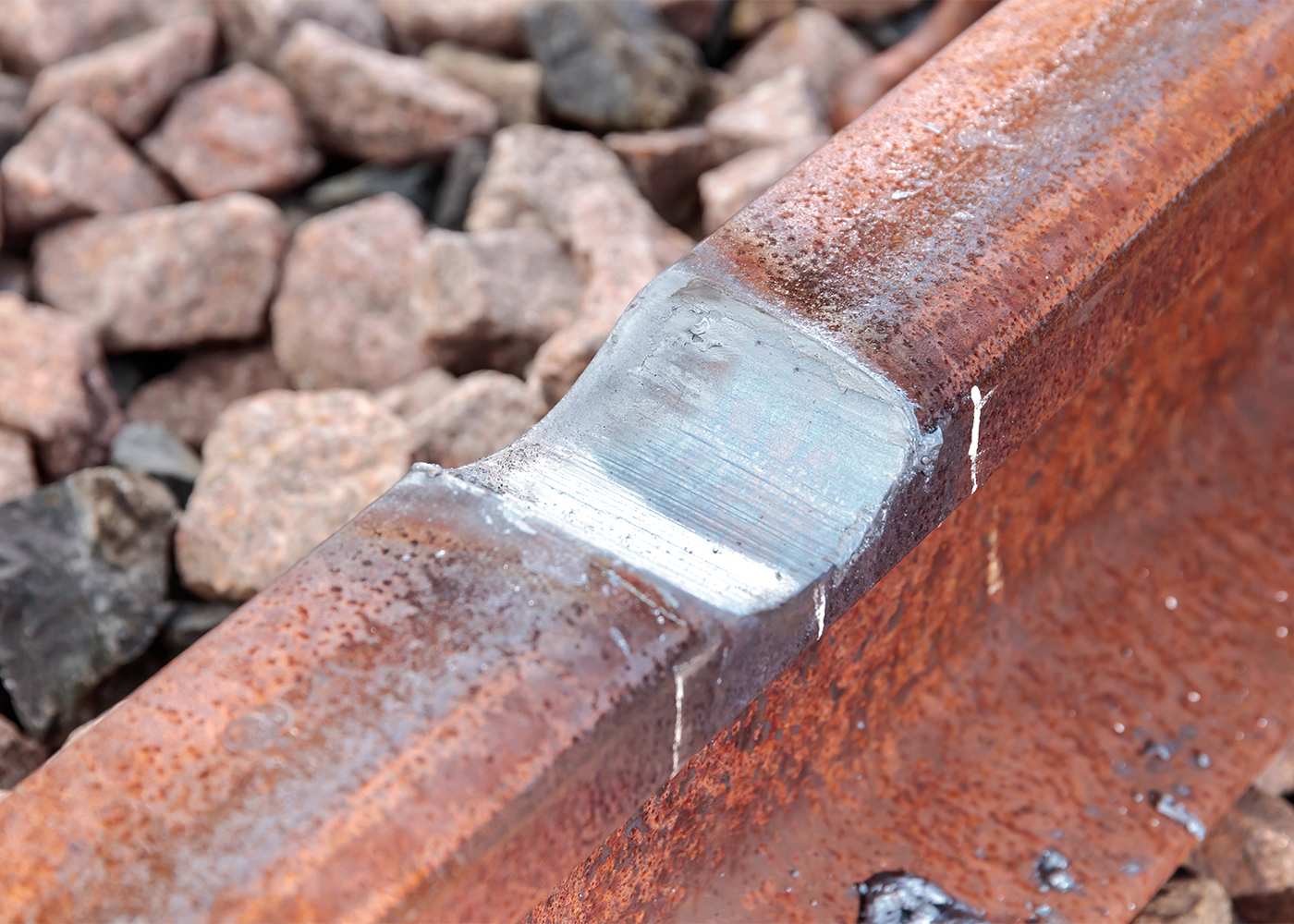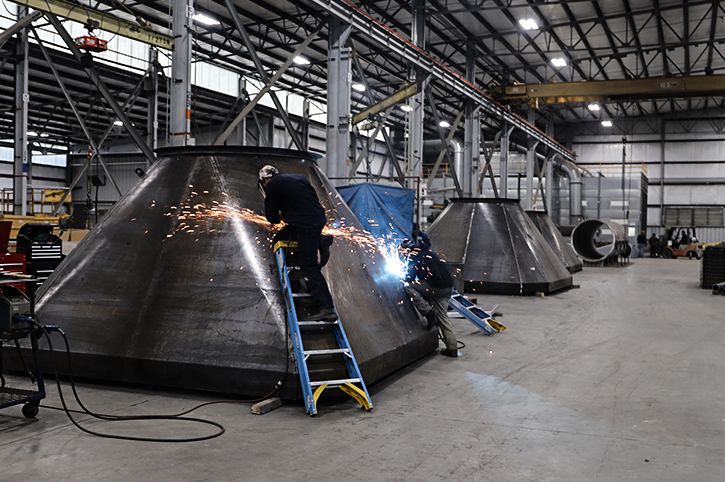Everything about Welding: Key Insights Into Techniques and Ideal Practices for Success
Welding includes a range of techniques, each suited for particular products and applications. Understanding these techniques, such as GMAW, SMAW, and TIG, is crucial for accomplishing ideal results. The right devices and safety and security techniques can not be ignored. As prep work and troubleshooting play vital duties in the welding process, grasping these components can considerably enhance the high quality of the end product. What are the vital aspects that assure an effective weld?
Understanding Different Welding Techniques
Welding strategies incorporate a variety of techniques, each suited to particular applications and products. Amongst one of the most usual methods are Gas Metal Arc Welding (GMAW), Shielded Metal Arc Welding (SMAW), and Tungsten Inert Gas Welding (TIG) GMAW, also known as MIG welding, is preferred for its speed and adaptability, making it excellent for thin materials. SMAW, or stick welding, is preferred for its simpleness and performance in outside atmospheres, specifically with thicker steels. TIG welding offers precision and control, making it ideal for complex job and non-ferrous metals (Montana Mobile Welding and Repair Fabrication). Each technique has its one-of-a-kind benefits and considerations, enabling welders to choose the most effective technique based on the task's requirements, material type, and wanted outcomes. Recognizing these methods is essential for effective welding
Vital Welding Tools and Devices
While various welding strategies call for certain abilities, the right equipment and devices are just as crucial for accomplishing high quality outcomes. Necessary welding tools includes welding machines, which differ depending upon the strategy-- such as MIG, TIG, or stick welding. Safety equipment, consisting of gloves, headgears, and aprons, assurances safety and security and convenience during the process. In enhancement, components and clamps assist protect materials in location, making certain precision in welds. Consumables like welding rods, wire, and securing gas are additionally essential components that influence the quality of the weld. Furthermore, devices such as cutters and mills promote surface prep work and post-weld finishing, adding to an expert result. Buying top notch tools eventually enhances the performance and performance of welding tasks.
Safety And Security Practices in Welding
Proper security practices are important in the welding industry to safeguard employees from possible threats. Welders need to put on appropriate personal protective equipment (PPE), including headgears with correct shading, handwear covers, and flame-resistant clothing. Adequate ventilation is vital to reduce direct exposure to unsafe fumes and gases created throughout the welding process. Additionally, employees need to be educated in the proper handling of welding equipment to stop mishaps. Fire safety and security measures, such as maintaining combustible products far from the welding area and having fire extinguishers conveniently offered, are needed. Regular evaluations of equipment and work spaces can help determine potential dangers prior to they bring about accidents. By adhering to these safety and security practices, welders can create a much safer working setting and lessen risks connected with their profession.
Preparing Products for Welding
Preparing products for welding is an essential step that significantly affects the top quality and integrity of the end product (Montana Mobile Welding and Repair Fabrication). Proper preparation includes cleaning the surfaces to remove impurities such as dust, corrosion, and oil, which can jeopardize the weld. Methods such as grinding, fining sand, or making use of solvents are frequently utilized to achieve a clean surface area. In addition, guaranteeing that the products fit with each other well is essential; spaces can lead to weak welds. It's also important to consider the positioning and positioning of the elements, as this will certainly impact the simplicity of welding and the last result. Ultimately, selecting argon tanks the ideal filler product and making certain compatibility with the base metals is necessary for accomplishing strong, resilient welds
Tips for Getting High-Quality Welds
Achieving high-quality welds needs focus to detail and adherence to ideal practices throughout the welding procedure. Correct joint preparation is crucial, making sure surfaces are cost-free and clean from pollutants. Choosing the proper filler material and welding method based upon the base metals is essential for optimal bonding. Preserving regular traveling rate and angle while welding can advertise and stop issues uniformity. In addition, managing warm input is crucial; excessive warmth can result in bending and damaged joints. Routinely checking the welds during the process allows for immediate modifications if essential. Utilizing proper post-weld treatments, such as cleaning and stress and anxiety alleviation, can enhance the sturdiness and honesty of the weld, eventually ensuring an effective outcome.
Fixing Typical Welding Issues
Welding typically offers challenges that can impact the quality and integrity of the end product. Common problems such as porosity, inconsistent weld grains, and getting too hot can emerge, each calling for particular repairing strategies. Comprehending these issues is vital for welders to enhance their abilities and achieve ideal results.
Porosity Problems Described
Although porosity can often be ignored, it remains an essential concern in welding that can compromise the integrity of an ended up item. Porosity refers to the existence of tiny gas pockets within the weld grain, which can damage the joint and lead to early failing. This problem usually emerges from pollutants, wetness, or incorrect shielding gas protection during the welding procedure. To mitigate porosity, welders must validate that the base materials are tidy and completely dry, utilize ideal protecting gases, and maintain constant welding criteria. Regularly evaluating the devices and setting can also assist identify prospective problems before they manifest in the weld. Addressing porosity efficiently is essential for achieving strong, sturdy welds that meet top quality standards.

Inconsistent Weld Beans
Irregular weld grains can greatly influence the high quality and toughness of an ended up product. Different aspects add to this issue, including improper travel rate, incorrect amperage settings, and inconsistent electrode angles. When the welder relocates also promptly, a bead might show up slim and lack penetration, while moving also slowly can cause too much buildup. Furthermore, using the incorrect amperage can result in either damaging or extreme spatter, both of which concession weld honesty. The welder's technique, such as irregular lantern activity, can likewise lead to irregular grain look. To reduce these troubles, welders need to focus on keeping steady, controlled movements and guaranteeing correct equipment settings to attain harmony in their welds. Uniformity is essential to accomplishing solid and reputable welds.
Getting Too Hot and Warping Issues
Too much warmth throughout the welding procedure can cause significant getting too hot and contorting issues, impacting the architectural stability of the work surface. These issues typically materialize as distortion, which can jeopardize placement and fit-up, making more setting up testing. Variables adding to overheating consist of the choice of welding specifications, such as voltage and travel speed, in addition to the sort of material being bonded. To minimize these problems, welders must preserve constant travel speed and ideal warmth input while monitoring the work surface temperature. In addition, preheating or post-weld warmth treatment can aid reduce stresses triggered by quick cooling - Belgrade Welding. Normal inspection and adherence to finest methods are necessary in preventing overheating and making certain the durability and reliability of bonded frameworks
Frequently Asked Concerns
What Are the Profession Opportunities in the Welding Market?
The click here to read welding industry uses diverse career opportunities, consisting of placements as welders, examiners, educators, and designers. Specialists can operate in manufacturing, construction, aerospace, and vehicle sectors, taking advantage of solid demand and affordable salaries in numerous duties.
Just How Can I Improve My Welding Speed Without Sacrificing Top Quality?
To improve welding rate without compromising quality, one should exercise effective strategies, keep tools, optimize setups, and improve hand-eye sychronisation. Routine training and seeking responses can additionally substantially contribute to accomplishing much faster, premium welds.
What Accreditations Are Readily Available for Welders?
Many accreditations exist for welders, including those from the American Welding Culture (AWS), the National Center for Building Education And Learning and Research Study (NCCER), and various industry-specific organizations. These credentials boost employability and show skill effectiveness.
Just How Does Welding Influence the Residences of Metals?
Welding influences the residential properties of metals by modifying their microstructure, which can cause adjustments in strength, ductility, and solidity. Heat input and cooling prices throughout the process substantially affect these product attributes.
Can I Weld Dissimilar Metals Together?
